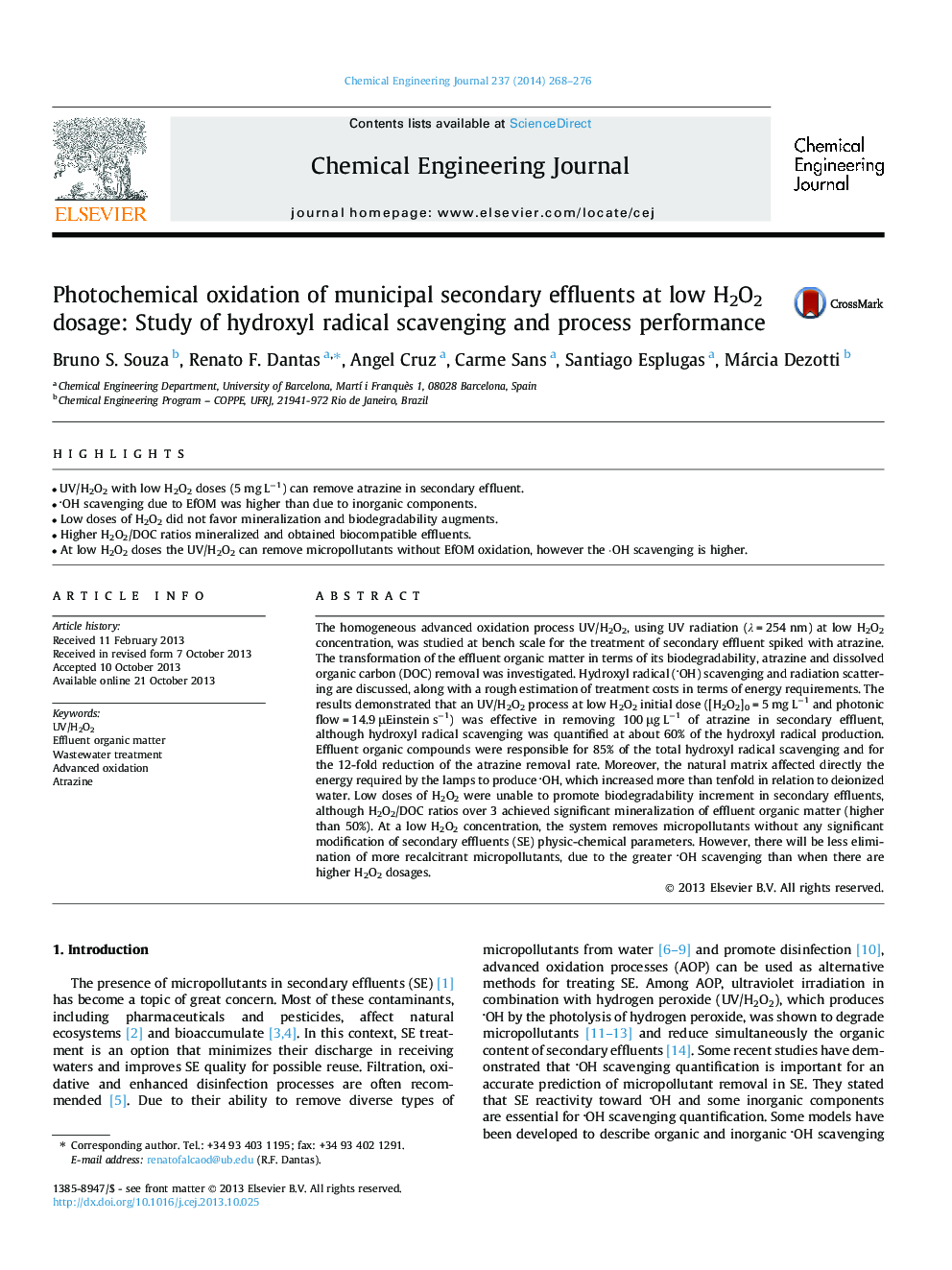| کد مقاله | کد نشریه | سال انتشار | مقاله انگلیسی | نسخه تمام متن |
|---|---|---|---|---|
| 148208 | 456407 | 2014 | 9 صفحه PDF | دانلود رایگان |

• UV/H2O2 with low H2O2 doses (5 mg L−1) can remove atrazine in secondary effluent.
• OH scavenging due to EfOM was higher than due to inorganic components.
• Low doses of H2O2 did not favor mineralization and biodegradability augments.
• Higher H2O2/DOC ratios mineralized and obtained biocompatible effluents.
• At low H2O2 doses the UV/H2O2 can remove micropollutants without EfOM oxidation, however the ·OH scavenging is higher.
The homogeneous advanced oxidation process UV/H2O2, using UV radiation (λ = 254 nm) at low H2O2 concentration, was studied at bench scale for the treatment of secondary effluent spiked with atrazine. The transformation of the effluent organic matter in terms of its biodegradability, atrazine and dissolved organic carbon (DOC) removal was investigated. Hydroxyl radical (OH) scavenging and radiation scattering are discussed, along with a rough estimation of treatment costs in terms of energy requirements. The results demonstrated that an UV/H2O2 process at low H2O2 initial dose ([H2O2]0 = 5 mg L−1 and photonic flow = 14.9 μEinstein s−1) was effective in removing 100 μg L−1 of atrazine in secondary effluent, although hydroxyl radical scavenging was quantified at about 60% of the hydroxyl radical production. Effluent organic compounds were responsible for 85% of the total hydroxyl radical scavenging and for the 12-fold reduction of the atrazine removal rate. Moreover, the natural matrix affected directly the energy required by the lamps to produce OH, which increased more than tenfold in relation to deionized water. Low doses of H2O2 were unable to promote biodegradability increment in secondary effluents, although H2O2/DOC ratios over 3 achieved significant mineralization of effluent organic matter (higher than 50%). At a low H2O2 concentration, the system removes micropollutants without any significant modification of secondary effluents (SE) physic-chemical parameters. However, there will be less elimination of more recalcitrant micropollutants, due to the greater OH scavenging than when there are higher H2O2 dosages.
Journal: Chemical Engineering Journal - Volume 237, 1 February 2014, Pages 268–276